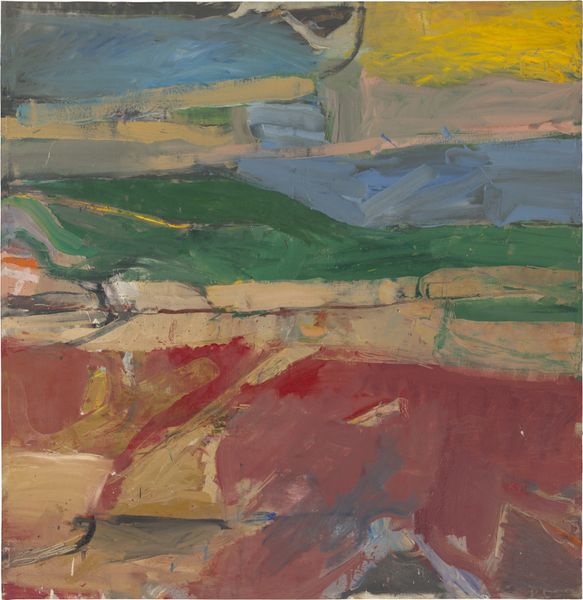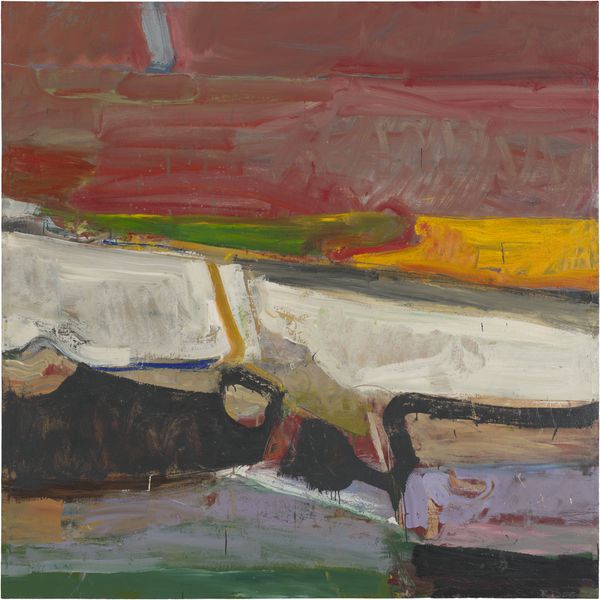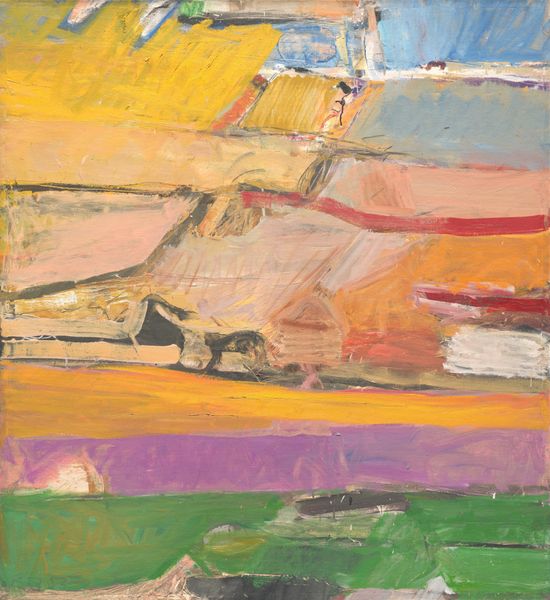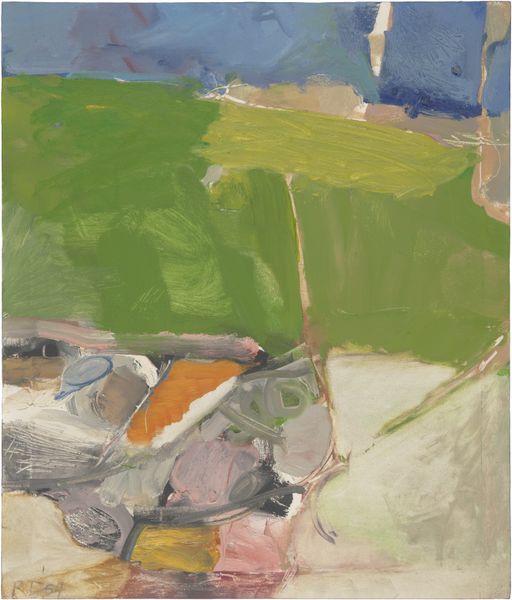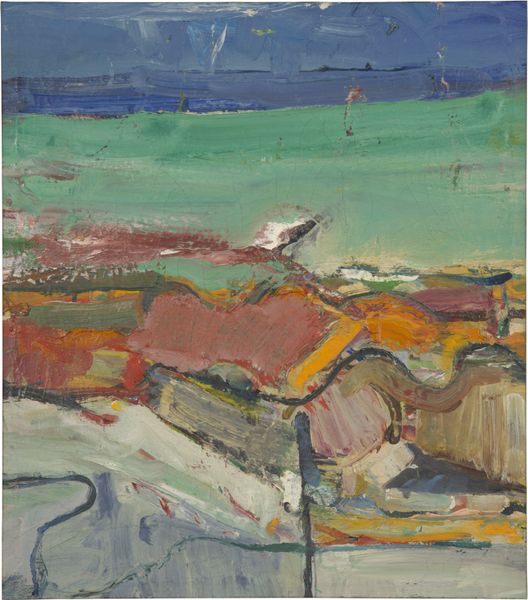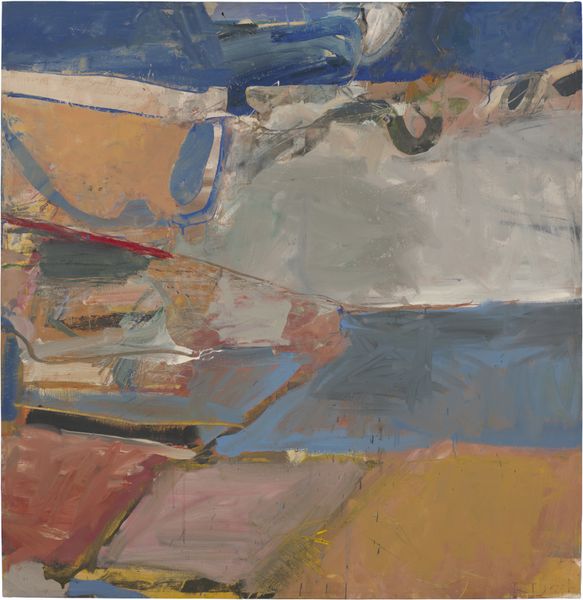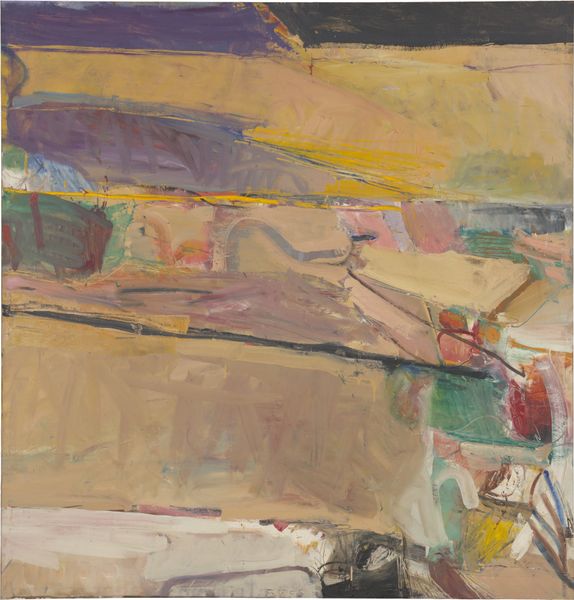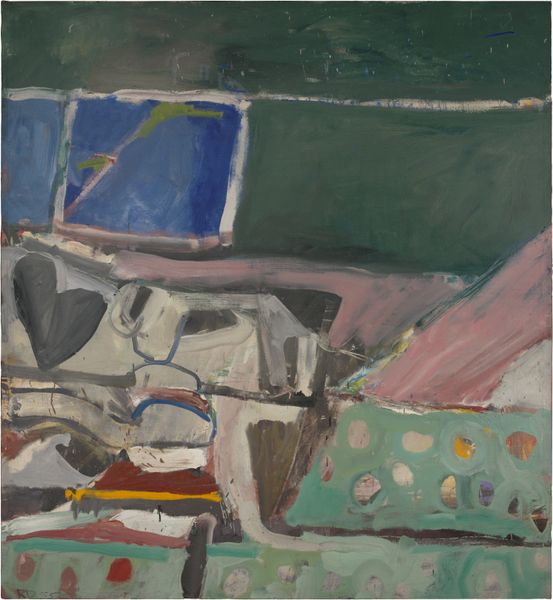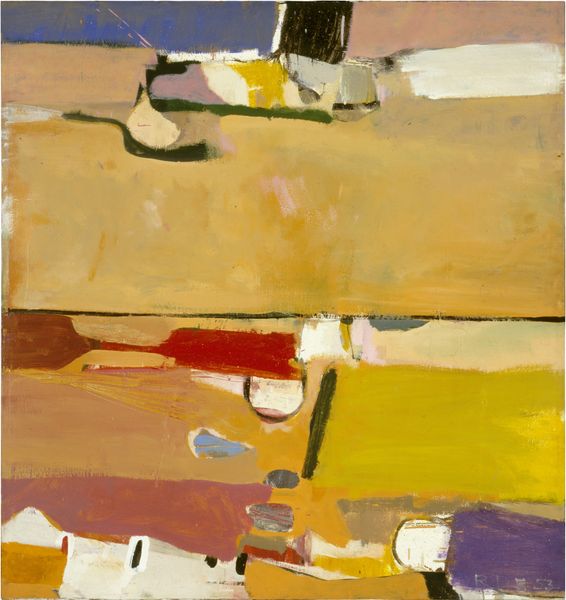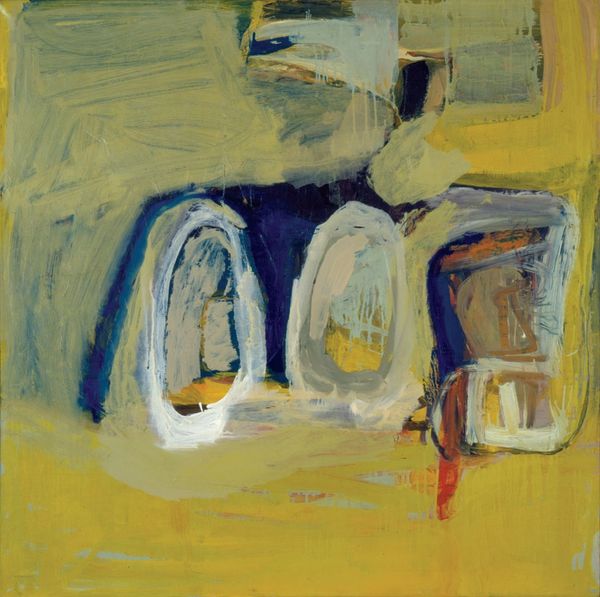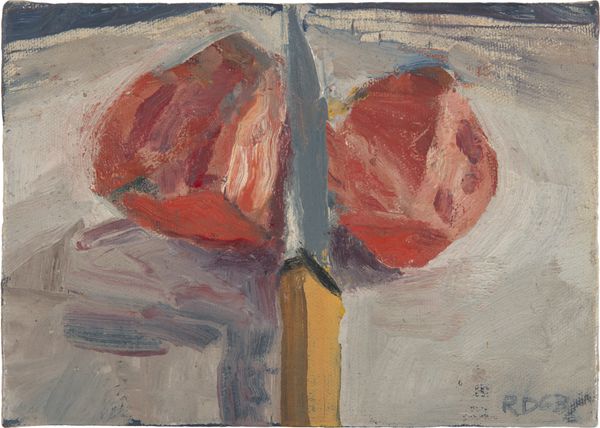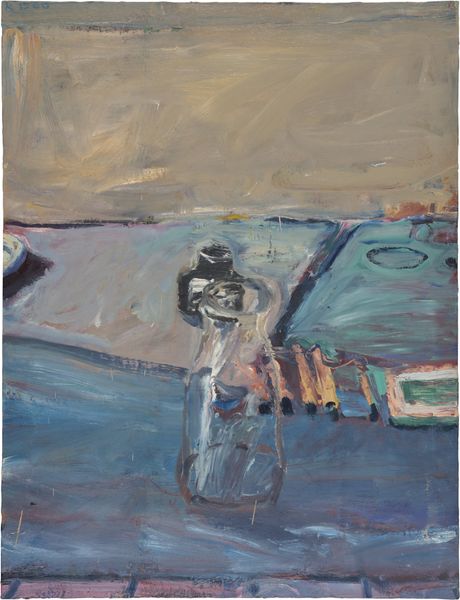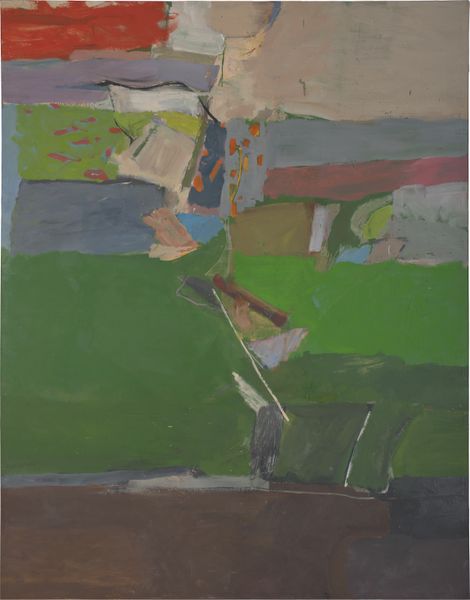
oil-paint
#
abstract-expressionism
#
cubism
#
abstract expressionism
#
oil-paint
#
oil painting
#
bay-area-figurative-movement
#
fruit
Dimensions: 33.7 x 25.4 cm
Copyright: Richard Diebenkorn Foundation
Curator: Richard Diebenkorn's 1959 oil on canvas, "Scissors and Lemon, II," presents a fascinating intersection of domestic still life and abstract expressionism. Editor: Well, I immediately notice the stark contrast in color, and that thick, almost brutal application of paint creates such a tangible weight and presence in the piece. It's got a somber feeling to me, would you agree? Curator: Somber, yes, but it is so interesting how Diebenkorn elevates these ordinary items. A pair of scissors and a lemon. Objects of labor and perhaps consumption, transformed by this expressive handling of the paint itself. Notice how the scissors are depicted with such directness, almost confronting us with its utility. Editor: The composition really reinforces that confrontation, doesn’t it? The flat planes of color create a shallow space. And the simplified shapes of the scissors, the lemon… everything pushes forward. What’s particularly compelling to me is how the textures and colors almost vibrate against one another. That murky blue shadow cast by the lemon, it is just magic! Curator: I see those dissonances too and what it means to give visual interest and tension to otherwise commonplace things, which connects to Diebenkorn's social context during the peak of mass production, and what he decides to paint and memorialize here. It also begs a question as to whether it’s about celebrating domestic labor or subtly critiquing consumerism by immortalizing it. Editor: That’s insightful. It could go both ways, especially given that flattening effect where everything becomes surface, or even a symbolic act through the scissors and the cutting through or dissecting of the modern life and its contents, and by extension its materialism! The bold palette works in concert with the structural geometry and material. It is really well thought through. Curator: Ultimately, Diebenkorn's choice of representing the banal is a direct dialogue on mid-century values regarding both materialism and labor through this deconstruction into shapes and colors, and an insight into production and its importance as it permeates visual culture. Editor: Absolutely. There's a power in its raw, somewhat unrefined quality, which is so alluring. It feels real. Thanks for elaborating on its underpinnings, that sheds additional color.
Comments
No comments
Be the first to comment and join the conversation on the ultimate creative platform.
